Developing literacy with young children does not have one defined, clear path. Instead, we should look at varied ways to engage, excite and encourage young children. Working with stories to support early understanding of literacy allows children to learn new vocabulary, sentence structures, story structures and language.
But how do you start? Jess Gosling, inspirational early years teacher and leading academic shares her top six tips to success in building early childhood literacy.
From a very young age children can tune into songs and follow along. When introducing a song, begin by using puppets, inviting the children to act it out, or show the song as a video. As the children comprehend what the ‘lines’ are, they can begin to sing using actions.
Action songs are excellent to get young children involved in singing. Learning rhymes is a precursor to phonics, so an incredibly important skill.
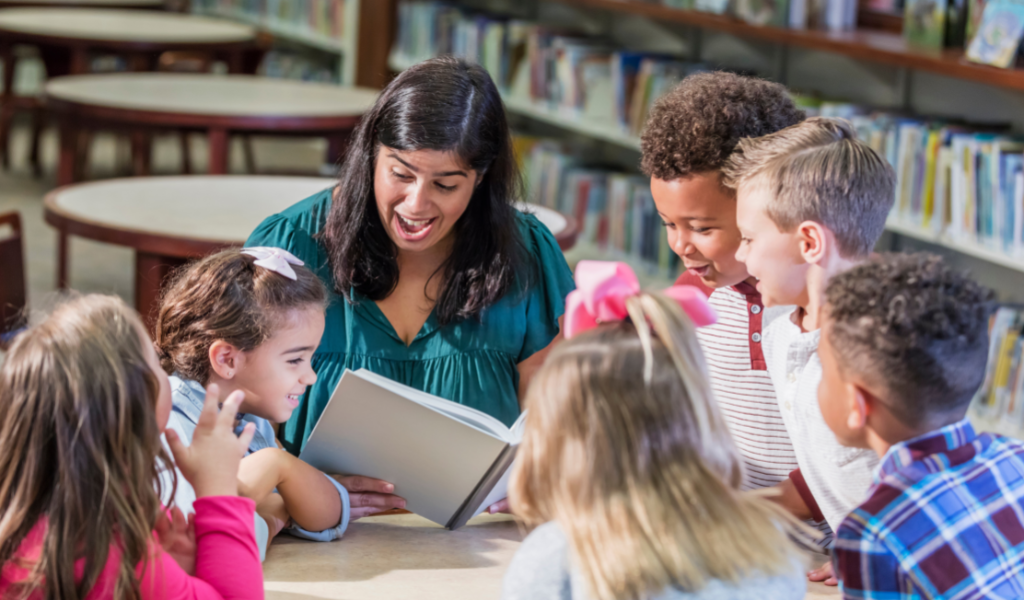
Young children are incredibly excited to share their ‘news’. This may be a significant event or simply that they bought a new toy. Encourage these conversations with you and in a small group of peers. Look for the back-and-forth conversations and prompt questioning.
If the object or photo under discussion is brought to your setting this is even better. Model sentences yourself by sharing your own photo. This is especially useful when discussing a past event, which can be modelled every week.
Sharing a book with a child is an incredible way to get to know them and develop a bond. Encourage them to show you things which interest them in the book and develop a conversation. Think carefully about your level of questioning to ensure the child understands you, but is also challenged by your discussion.
In a group, children will explore books they might not have chosen for themselves. This is a fantastic way to expose them to other genres plus non-fiction. Encourage listening, comprehension and questioning skills.
When returning to a well-known book, build a story map together or act out the story. Use books with repetitive language and simple plots initially, to encourage children to join in and comprehend what is being read to them.
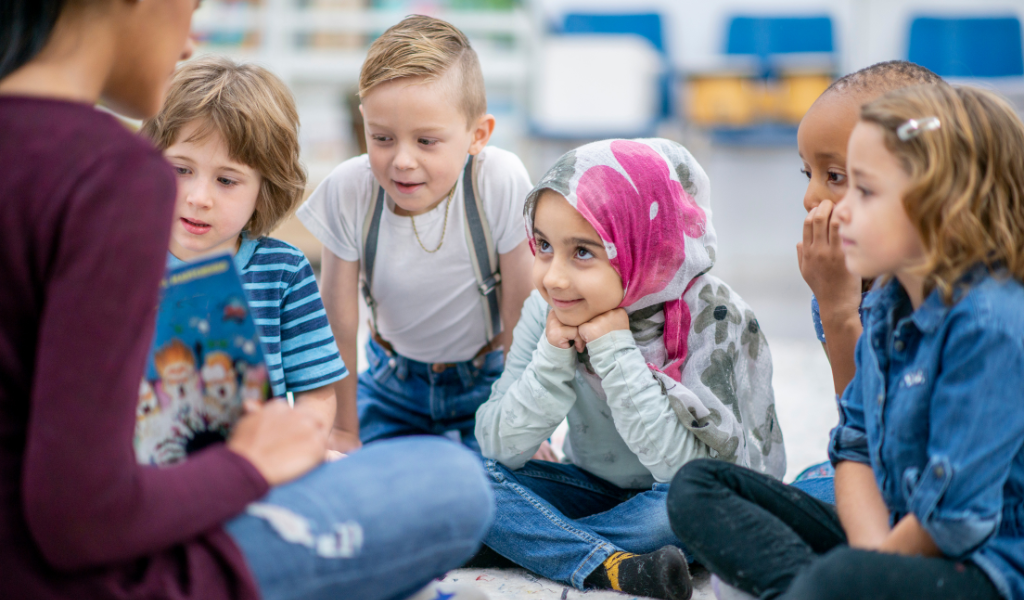
As the children’s understanding of story structures develops, so can their ability to create stories. Helicopter stories (Tricia Lee, 2016) is the idea that a child can tell you a story, which can be scribed. It can be as simple as one idea or sentence! This story is then read by the adult whilst the child acts out the story with friends, which is a very exciting way to bring stories alive!
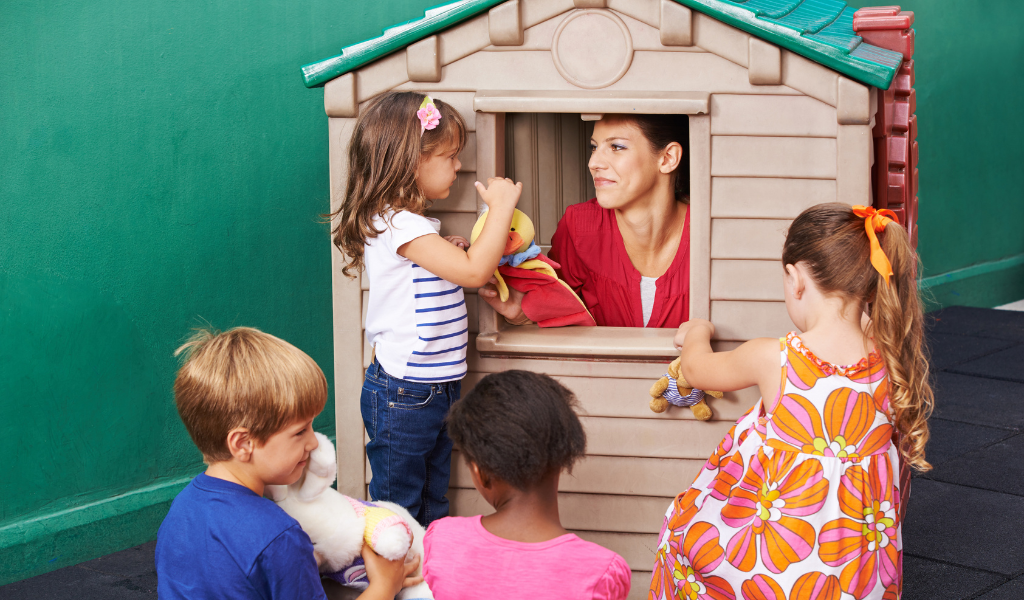
As the children become more confident creating stories, they can have story plans modelled to them. These plans may be missing a problem or resolution, which can be voted for, and acted out by the class. The children can draw out their own plans to help structure a story. The teacher can again scribe these stories, and the children can act the story.
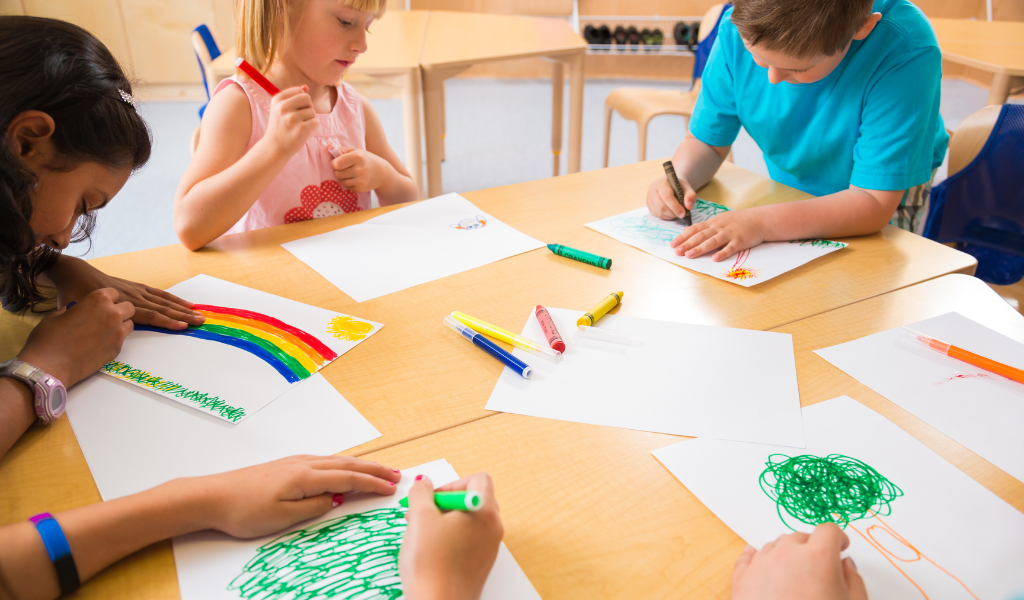
Involve children in the process! Encourage them to create their own books and have blank books available. Ask them to share these stories with you and their peers, and invite children within the setting to share their books too.
Story sacks also are a fantastic way to engage children. These can be created with puppets, or handmade drawings on lollipop sticks. The children can then act out their favourite well-known stories, or their own.
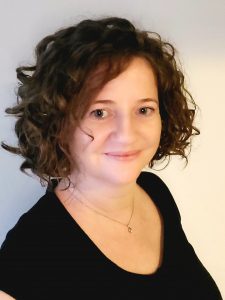
Jess Gosling is an international Early Childhood teacher, currently working with 4-5 year olds. Jess has been teaching for more than 10 years, in a range of settings. She has developed a language curriculum for the children she teaches, as her current class comprises a majority of EAL children.
Jess is dedicated to CPD, and completed a Masters in Childhood Studies and Early Years with distinction. She presents her ideas through conferences and advocates strongly for supporting the social and emotional needs of young children. Her work was recently recognised by the Chartered Council for Teaching, where she was awarded a fellowship.